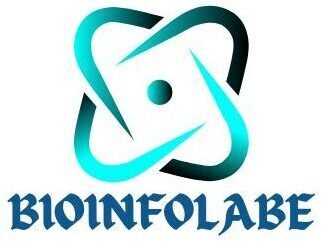While the world is filled with ephemeral digital texts, there is something so seldom found, authentic, emotional, and beautiful: the beauty of calligraphy by hand. Timeless in nature, the art of calligraphy speaks to hundreds of years of artistic evolution; today, it’s a skill calling the curious minds of modern creatives to find purpose in art beyond the pixel.
Selling calligraphy training is not about selling a course; rather, it is an invitation to an immersive, creative journey that nourishes the soul. Inspire passion, reveal the joy of creating with intention, every step of the way in one place. Now, let’s look at how to sell these services realistically and with intensity. This makes people resonate with her from within.
Painting a Vision: Tapping into the Heritage and Emotional Depth of the Art
The calligraphy course is not strictly technical, but it introduces history, consciousness, and self-expression. Marketing should be an appeal to the beauty of calligraphic heritage through websites and other sources of information. By retelling the history of calligraphy-from ancient scrolls to ornate manuscripts in a relatable manner with modern aspirations, the potential students see, in addition to the skill, the culture they will be exposed to.
Designing Visual Storytelling: Emotions are brought out by images themselves; social media, flyers, and websites should be packed full of stunning imagery-handwritten quotes, beautiful calligraphy tools, and snippets of the process a student goes through. The organization of such a showcase of final pieces and relaxed process shots enables prospective students to create in their minds an image of themselves crafting beautiful work.
Emphasizing the Emotional Benefits: Describe how calligraphy creates mindfulness, focus, and stress release. Calligraphy is therapeutic for many people in today’s chaotic world. When marketing calligraphy training, the marketer should lean into these benefits to show the richness this art brings to everyday life.
Building Trust and Credibility: The Artisan Pledge
Authenticity will play a major role in marketing the training in calligraphy; people will not just want to learn from anyone, but rather they want a mentor who can smell and breathe this craft. One gains trust by showing first one’s credentials, passion, and dedication as an instructor.
Instructor’s Story: Other than being a teacher, introduce the instructor to students as an artist on a journey himself. Tell them about his background, his passion for calligraphy, and any artistic achievements. A small video interview or a set of blog posts about the instructor’s journey from novice to master can be a big influence on students looking for a guide to lead them on their journey.
Show Success Stories of Past Students: Testimonials and success stories lend credibility to your services. Instead of general reviews, choose an in-depth story. Emphasize stories about students who have found happiness, purpose, and life change, or at least clarity through calligraphy. Encourage students to share their work and experiences. Use those stories to create a community around your brand.
Embracing Accessibility and Inclusivity: Making Calligraphy Approachable
One of the greatest obstacles that prevents people from taking up calligraphy classes is this notion of failure. Many students think that such an extensive and intricate art requires either originality or patience. Marketing services for calligraphy training should dispel such fears by making the art form accessible and inviting to all, regardless of experience or perceived skill level.
Courses suitable for beginners: Offer courses that start with the basics. And inform the audience that everyone is free to learn calligraphy. This will put people at ease who may be intimidated by the advanced exhibits and artwork. Add testimonials from previously stumped beginners who have gained new confidence in the art.
Flexible learning options: Offer online classes. Download instructions and step-by-step video courses. So that you can learn at your convenience in life. The course needs to be marketed. They show flexibility to show that calligraphy can fit into someone’s schedule and be a part of their life. Whether it’s a weekend hobby or a daily practice.
Crafting an Aesthetic Brand: Art and Emotion in Every Touchpoint
Calligraphy is about elegance and style. Their marketing materials should speak to just that: from website design to social media posts, email newsletters, to each and every touchpoint that crafts an experience oozing from the charm of calligraphy.
Using Elegant Visual Design: Engaging graphics, subtle typography, soothing color palettes, and balanced white space in marketing materials add to the value. This involves the use of calligraphic or handwritten headers with personal touches. The design has to be clean and artistic enough for it to be calligraphy-like to catch those clients who appreciate beauty and art.
Social Media as Canvas: Instagram, Pinterest, and YouTube are going to be great outlets with which to showcase calligraphy in short tutorials and time-lapse videos of practice sessions. Such mediums provide many capabilities for a visual storyline and capture the magic behind the process that calligraphy is, which often really inspires potential students. Host interactive posts requesting followers to do small exercises or ask how they have been creative, inviting engagement for community building.
Crafting the Calligraphy Experience: From Enrollment to Transformation
Marketing doesn’t end at sign-up; it continues throughout the student’s journey. By making each student feel valued, supported, and creatively nourished, you’re not only providing a course but nurturing a community that becomes a source of ongoing support and inspiration.
Onboarding needs to be friendly: from the time of enrollment, students need to feel welcomed into an enabling and supportive community. Send them a welcome note, a resource kit either physical or electronic, and maybe an introductory video on what they are going to learn. This may turn this course into so much more than just some simple transaction.
Event Organization and Challenges within the Community: The sense of community fuels creativity. Create regular online workshops, challenges, or themed events where students can share their work, give feedback, and learn from others. In such interactions, they will forge friendships, grow deeper in their passion for calligraphy, and become brand ambassadors.
Multi-Sensory Marketing: A Journey Beyond Visuals
Although calligraphy is visual, it can allow more than one sense to be involved in its marketing. Art-especially such a tactile form as calligraphy- resonates deeper when evocative of more than just sight.

Add Sounds and Videos: Provide soft music with meditative videos showcasing the art form and focusing on the rhythmic, almost therapeutic nature of calligraphy. The ASMR calligraphy videos capture the sounds of pen strokes across the paper, making it soothing, hence motivating prospective students to get an idea about the art even before registering.

